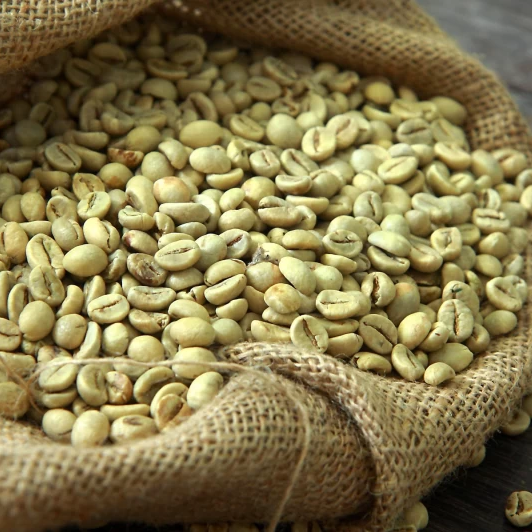When I first got into coffee and writing about coffee on my website Joemush all I cared about was a nice light brown coffee with whipped cream on top. The coffee shop used to serve it with two coffee beans, and it made me feel like, “Yes, this is coffee!” But as I’ve learned more about coffee and experimented with making it in various ways, I’ve realized that it’s not about the smell and texture. The different shades of coffee color, which are influenced by the shades of coffee beans, play a crucial role in making a great cup.
A Spectrum of Coffee: Understanding the Art of Roasting
Coffee, often called the “elixir of life,” goes through an interesting change from green, unroasted beans to the tasty and aromatic drink we all enjoy. Roasting coffee is an art form that involves a careful dance of temperatures, colors, and aromas. Join us on a journey through the spectrum of coffee shades, where each hue represents a unique stage in the roasting process.
1. Green Unroasted Coffee:
– Raw and untouched, these beans hold the promise of potential flavors.
– At room temperature, they offer a glimpse into the starting point of the coffee roasting adventure.

2. Sweet and Fruity Early Stages:
– As the beans begin to heat up, a lighter green emerges.
– Around 275 degrees, akin to a rare steak, they transition into a pale, early yellow, exuding sweet and fruity notes.

3. Golden Transitions:
– At 330 degrees, the beans take on a lime-yellow hue.
– Moisture from the beans starts to steam off, and they transform into a yellow-tan, emitting a toasted bread fragrance at 345 degrees.

4. First Crack Symphony:
– Brown, darker than khaki chinos, marks the beginning of the first crack at 370 degrees.
– The beans sound like a bowl of Rice Krispies, signaling the release of carbon dioxide and a city roast achievement.

5. City+ to Full City Roasts:
– Progressing to a dark coffee color, City+ resembles a light French roast.
– The beans swell with CO2, and at Full City, the internal temperature hits a critical point, marking the end of the first crack.

6. Darker Depths:
– Full City+ mirrors lighter dark chocolate.
– Roasting characteristics begin to take over, and the beans start eyeing the ominous second crack.

7. Vienna to Full French Roast:
– In the Vienna-light French roast stage, the beans darken, and the origin flavors fade.
– Full French brings a deep blackening, with sucrose caramelization pushing the boundaries.

8. The Abyss: Carbonized:
– Resembling black licorice, this stage is perilous.

– Beans approach the brink of burning, emitting smoke, and the coffee aroma becomes a warning of imminent fire.
9. Piano Black and Extinguishing Flames:
– In the final moments, beans reach a piano-black shine.
– This is the point of no return; the fire extinguisher is on standby.

Conclusion:
Roasting coffee is a careful process where the Different colors of coffee show a journey from potential to perfection, but there’s a risk of going too far. For coffee lovers, knowing this adds a deeper appreciation for how simple beans become the rich, diverse flavors in our cups, so the next time you savor that delightful cup of coffee, remember the symphony of shades it went through to reach perfection.
